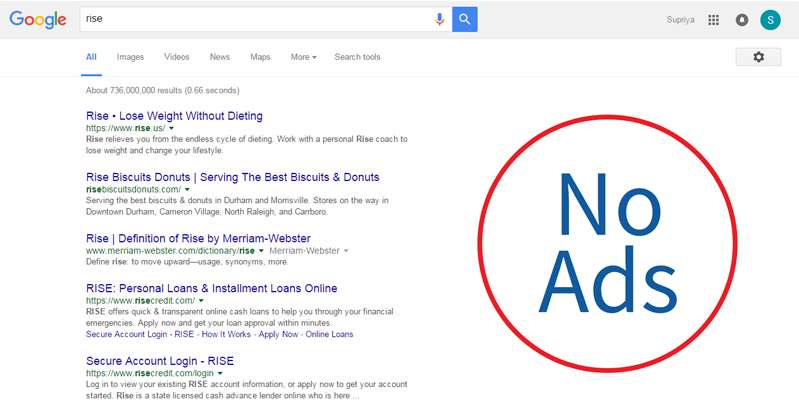
 Have you noticed anything peculiar about your search engine results page (SERP) on Google lately? If you haven’t, don’t worry; serendipity has a strange sense of humor, and after reading this you probably won’t be able to un-see Google’s latest tweak.
Have you noticed anything peculiar about your search engine results page (SERP) on Google lately? If you haven’t, don’t worry; serendipity has a strange sense of humor, and after reading this you probably won’t be able to un-see Google’s latest tweak.
On Feb. 16, Google confirmed that it was losing the side ads on the right side of the result page, cleaning up the white side space and adding an extra ad spot in the fourth position of the regular results, as well as one to three other ads at the bottom of the SERP.
For SEO gurus and advertising folk, this change has been met with uncertainty. Will cost-per-click get driven up? What about organic search results? Where are the side ads going and why?
Method to the Madness
Aside from cleaning up the appearance of Google’s desktop experience, following the design and layout of Google’s mobile application, there’s actually a good reason for ditching the side ads.
Testing the side ads along with their top ad counterparts was difficult. That’s because side ads didn’t include the same extensions as the top ads, including contact info and directions. Now, Google, as well as advertisers, don’t have to worry about this issue when testing for results and effectiveness.
And there’s another reason to celebrate. Side ads weren’t getting the same extension benefits as the top ads. However, thanks to this fourth ad position, advertisers can now display more extensions, giving them more room to talk about themselves (including images and links), which should drive more clicks.
What’s more, the new fourth position looks suspiciously like organic results. For users with a bias towards unpaid search results, this is a nifty upgrade that advertisers should welcome and users will have to be on the lookout for.
Reviewing January’s paid desktop clicks by position, only about 15 percent of the clicks came from side ads; so generally speaking, ad impressions may shift around a little, but they aren’t going anywhere.
What’s the Downside?
Unfortunately, organic search results will likely suffer as a result of the policy change because they will no longer appear “above the fold” on most desktop computers.
Keen SEO professionals will have to make adjustments or risk having their results driven down even further. According to this article by Search Engine Watch, SEO pros can stay relevant by doing “everything in your power to make your organic listing stand out – metatag optimization (yes I do realize this is 2016 now), Schema and other options suitable for your particular site. Ads will evolve, becoming more interactive and visually attractive – this means you should not be left behind.”
It’s too soon to say how dramatically the shift will affect organic search and what it will mean for desktop users, who have become steadily less relevant since mobile overtook desktop usage in 2014.
Don’t panic over your lost side ad space. Instead, embrace the opportunities this fourth position may afford you in 2016. Ultimately, Google is trying to improve the user’s experience, and drive better, more relevant results. That’s certainly nothing to scoff at.









